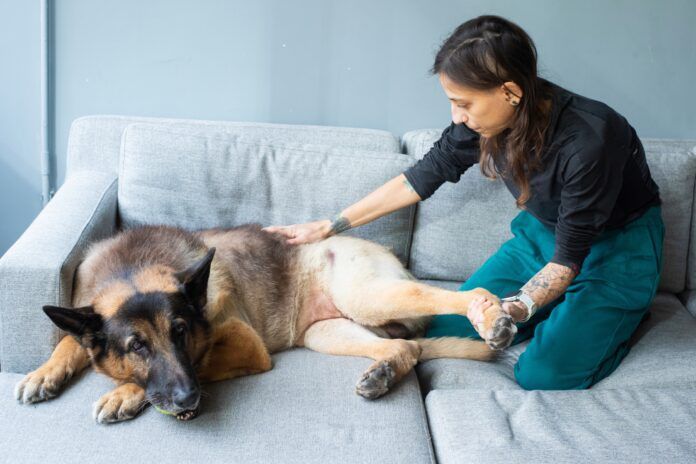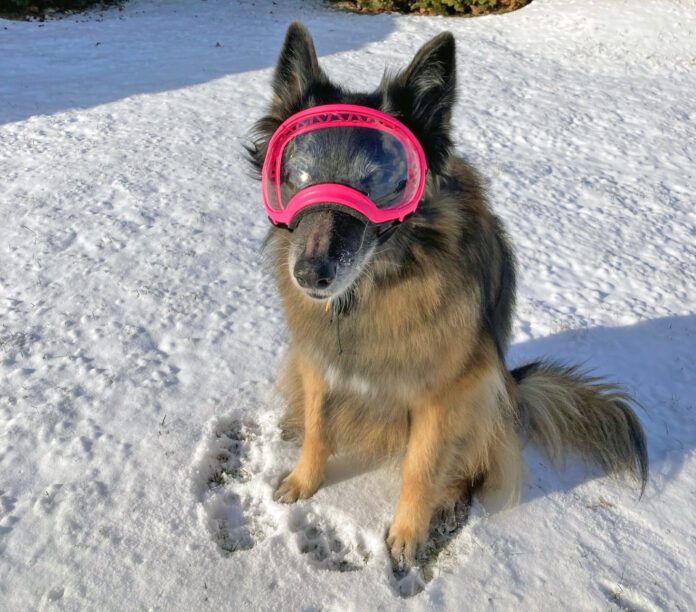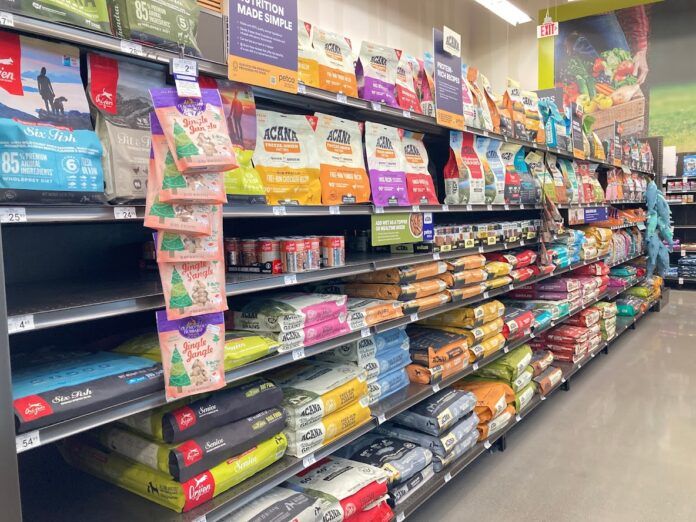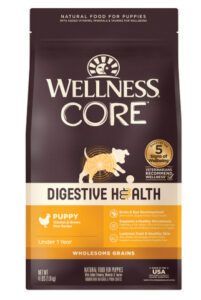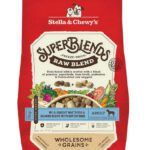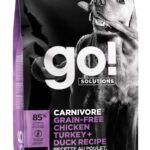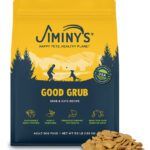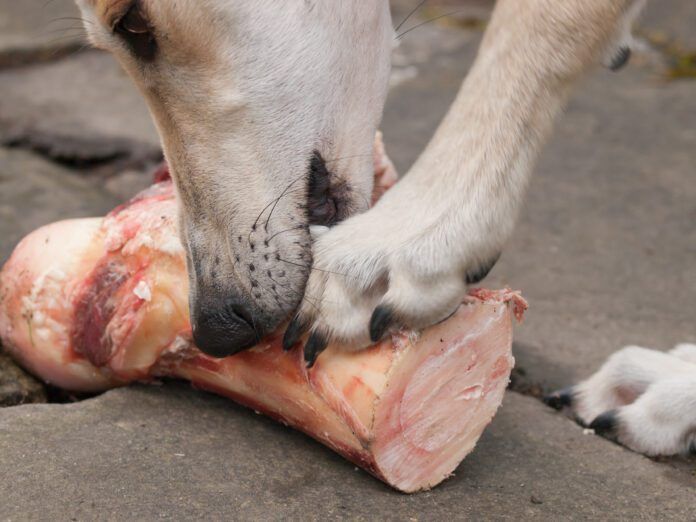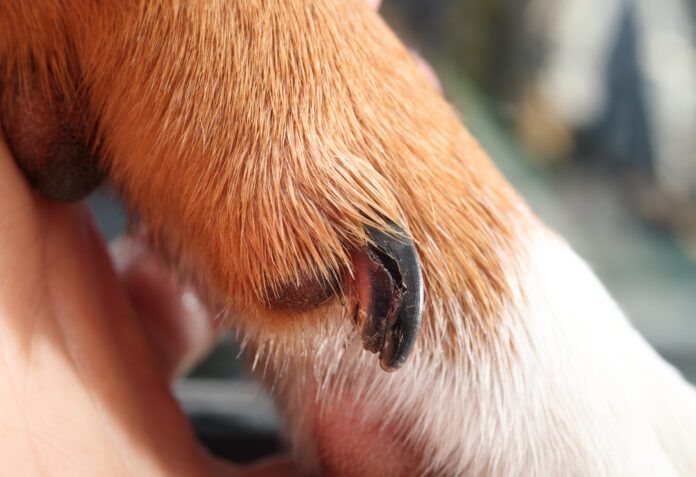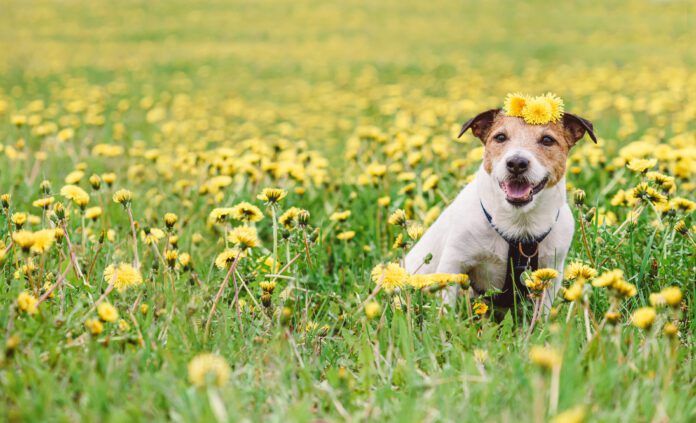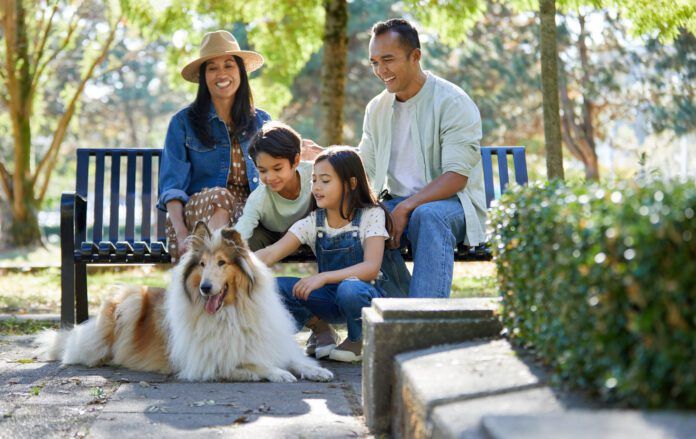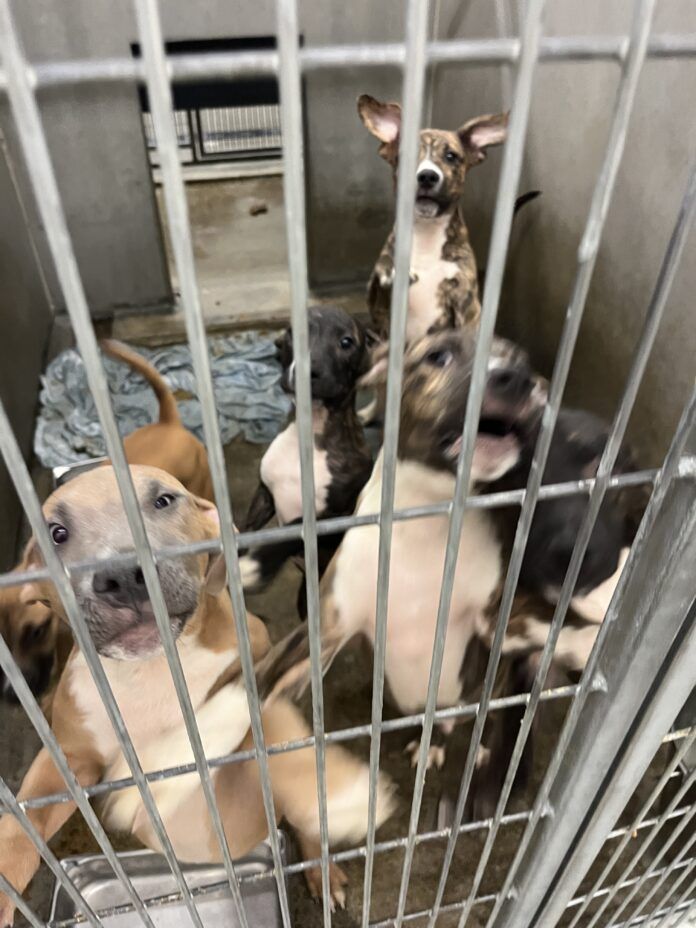Like their human companions, dogs and puppies hurt when they’re injured or when an illness or surgery causes discomfort. Whether a dog’s pain is acute (sharp and recent) or chronic (continuous or frequently recurring), there are natural pain relief options that can help.
Dogs are famous for hiding pain, so pay close attention when your pup limps, has trouble walking, whimpers, whines, reduces activity, licks or chews a leg or other area, or seems restless or agitated. The cause may be a physical injury, osteoarthritis, hip or joint issues, infections (such as ear or bladder problems), tooth or gum disease, or cancer. Not every symptom requires medical attention, but if your dog is in obvious pain, check with your veterinarian.
Managing Acute Pain in Dogs
Acute pain comes on suddenly, such as when your dog cries after hurting himself running or playing, or after surgery, such as when your female dog is spayed. Follow your veterinarian’s recommendations and be ready to provide what injured dogs need to speed recovery: rest, a comfortable bed, peaceful surroundings, easy access to water, and pain-support therapies.
Cold packs are often recommended for acute pain. To apply one, place a thin cloth such as a tea towel between the dog’s skin and a bag of ice or ice shavings, frozen vegetables, or a frozen gel pack. Move it frequently to avoid damaging tissue. Cold packs are recommended for recent injuries, inflammation, bruises, and swelling. They can be used for up to 10-15 minutes at a time, repeating frequently during the first 48 hours.
Managing Chronic Pain in Dogs
Chronic conditions stay for weeks, months, or years. Many, like osteoarthritis, become more debilitating with time. Joint pain and other discomforts that limit a dog’s mobility can be treated with gentle (not hot) warmth from a heating pad, hot water bottle, dry or moist warm towel, or heat wrap. Gentle heat can be applied for 15 to 30 minutes at a time, with equal time off. This treatment helps relieve pain, muscle spasms, and joint stiffness, increases blood circulation to the injured area, and helps prepare muscles for exercise or stretching.
Anti-inflammatory Herbs for Canine Pain Relief
Medicinal herbs known for their anti-inflammatory or pain-relieving effects on dogs include:
- Boswellia (Boswellia serrata)
- Cayenne (Capsicum annuum)
- Chamomile (Matricaria chamomilla, Anthemia nobilis)
- Cat’s Claw (Uncaria tomentosa)
- Comfrey (Symphytum officinale)
- Devil’s Claw Root (Harpagophytum procumbens)
- Turmeric (Curcuma longa)
- White Willow Bark (Salix spp.)
- Yucca (Yucca spp.)
See our review of herbs for arthritis and visit the websites that offer herbal pain remedies like Animal Essentials Joint Support, DogPainAway, and DGP for Pets. Members of the Veterinary Botanical Medical Association routinely use medicinal herbs for pets.
Can CBD Help Relieve Pain in Dogs?
Today’s most popular herbal products for natural pain relief for dogs include hemp-derived CBD oils, tinctures, capsules, treats, and salves.
In her 2019 review of CBD’s uses in veterinary medicine, Catherine Ashe, DVM, warned, “There is not a single medication containing CBD that is approved by the United States Food & Drug Administration (FDA) for animals.” This remains true today, though in January 2023, the FDA announced that it plans to work with Congress to develop a new regulatory pathway for all CBD products.
PubMed, the National Institutes of Health’s medical research database, lists over 100 published papers investigating CBD’s canine applications. Several tested CBD’s effect on physical pain and continuing research may prove that specific CDB products given at specific doses effectively control pain caused by different conditions.
Until then, talk to your veterinarian, who may have clinical experience and recommendations. Look for brands that are third-party tested for strength, quality, and safety, such as Chill Paws, CBD Dog Health, All the Best Pet Care, Honest Paws, or Medterra CBD for Pets. Third-party testing is important because, according to the FDA, CBD product label descriptions are often incorrect. Individual responses vary, so start with the smallest recommended dose for your dog’s weight (or begin with an even smaller amount) and observe your dog’s reaction. Gradually increase to a higher recommended dose or reduce the dose as needed.
Aromatherapy and Essential Oils for Dogs
Essential oils, most of which are steam-distilled from the leaves, roots, or blossoms of medicinal plants, do more than smell interesting. Many of them have pain-relieving properties, such as Copaiba (Copaifera officinalis), Peppermint (Mentha piperita), Helichrysum (Helichrysum italicum), Frankencense (Boswellia spp.), and Lavender (Lavendula angustifolia). For pet application, essential oils are usually diluted in carrier oils and applied with massage or petting.
Some veterinarians have published guidelines about the use of essential oils for pets. Nancy Brandt, DVM, founded the Veterinary Medical Aromatherapy Association and offers online courses to pet owners and veterinarians; Melissa Shelton, DVM, wrote The Animal Desk Reference, now in its second edition; Mia Frezzo, DVM, wrote SpOil Your Pet: A Practical Guide to Using Essntial Oils in Dogs and Cats, now in its third edition; and Janet Rourk, DVM, wrote a free Essential Oils for Pet Safety Guidebook and founded Essential Oil Vet, an online resource for canine aromatherapy.
Products designed for pet use help relieve pain in dogs of all ages. Dr. Shelton’s Any-Itis blend combines fractionated coconut oil with Copaiba, Helichrysum, and Peppermint. It can be gently massaged into painful joints and other areas of inflammation.
At Frogworks, pet aromatherapist Frances Fitzgerald Cleveland created
Path to Comfort with Sweet Marjoram, Ginger, Helichrysum, Carrot Seed, Grapefruit, Vetiver, and Rose essential oils in a base of safflower oil for the improvement of sore muscles, arthritis, lack of mobility, and pain, plus support for emotional stress, anxiety, and sadness.
Be sure to only use essential oils that are appropriately formulated and safe for dogs.
Canine Massage for Pain Relief
Canine massage therapists are ready to help your dog recover from painful conditions, but there’s a lot you can do yourself. See WDJ’s Dog Massage Instruction and Pain Relieving Massage Therapy for Dogs. For certified pet massage therapists, see the National Board of Certification for Animal Acupressure and Massage and The International Association of Animal Massage and Bodywork.
Systemic Oral Enzyme Therapy
Systemic oral enzyme therapy is more familiar in Europe than in the United States. In fact, the German product Wobenzym is that nation’s most popular NSAID (non-steroidal anti-inflammatory) next to aspirin. Products labeled for systemic therapy are enteric-coated, meaning that they survive stomach acid and break down in the intestines, where they enter the blood stream. Systemic oral enzyme products sold in the US include Wobenzym, MediZym, Mega-Zyme, and FlavenZym.
For a detailed description of their veterinary uses, see Enzyme Therapy for Quicker Canine Injury Recoveryand Wobenzym: A Digestive Enzyme Supplement for Dogs. According to the veterinarians we interviewed for those articles, systemic oral enzymes help prevent injuries, speed recovery after accidents or surgery, and bring new mobility to older dogs with chronic stiffness, joint pain, and skin and coat problems. The product NZymes, which is not enteric-coated, is designed for pets, and its website features several videos showing the recovery of dogs in pain.
Enzymes should be given between meals (at least one hour before or two hours after eating) for systemic effects. If the label shows a human dose of 3 tablets twice a day, use 3 tablets once a day for dogs weighing 51-100 pounds, 2 tablets daily for dogs weighing 21 to 50 pounds, and 1 tablet daily for dogs weighing 3 to 20 pounds.
Support Therapies for Dogs in Pain
Veterinary chiropractors (see the American Veterinary Chiropractic Association), acupuncturists (see the American Academy of Veterinary Acupuncture), acupressure practitioners (see and Animal Acupressure), and physical therapists (see the Canine Rehabilitation Institute) have long provided help for dogs in pain, and now technologies like PEMF (Pulsed ElectroMagnetic Field therapy) and laser treatments provide additional drug-free support. In addition, members of the American Holistic Veterinary Medical Association practice the techniques mentioned here.
Whatever the cause of your dog’s discomfort, there may be a natural method that speeds recovery.


